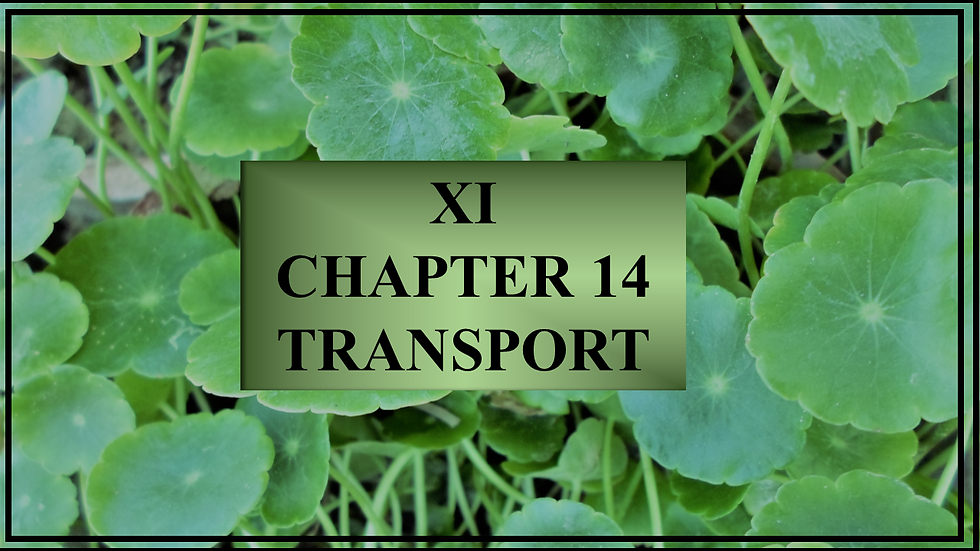XI CHAPTER 13 GASEOUS EXCHANGE
- Kiran Syed

- Mar 11, 2020
- 2 min read
Updated: Apr 17, 2020

The gas exchange in organisms takes place by the process of diffusion.
Efficient gas exchange depends upon following factors:
(i) Maintenance of diffusion gradient,
(ii) Large surface area in relation to the volume of organism, and
(iii) Presence of moist membrane or respiratory surface for exchange of gases.
(i) Maintenance of diffusion gradient,
Refers to the concentration gradient of an ion or molecule. The concentration gradient may exist across a biological membrane, where the concentration is higher on one side of the membrane compared to the other side.
(ii) Large surface area in relation to the volume of organism
The surface-area-to-volume ratio or SA:V, is the amount of surface area of an organism divided by its volume.
(iii) Presence of moist membrane or respiratory surface for exchange of Gases:
gases can only cross cell membranes when they are dissolved in water or an aqueous solution, thus respiratory surfaces must be moist.
RESPIRATORY MEDIA
The source of oxygen called respiratory media for aquatic and terrestrial
organisms are water and air, respectively. Aquatic organisms obtain oxygen
dissolved in water while terrestrial organisms obtain it from the atmospheric air.
GASEOUS EXCHANGE IN PLANTS
In higher land plants gas exchange through entire surface of leaves and stem is prevented due to external, waxy covering called cuticle.It is an adaptation to avoid excessive evaporation of water.
The cutilarized epidermis of leaves has numerous pores called stomata (singular-stoma) for the exchange of gases as well as evaporation of water. Each stoma is formed by two modified epidermal bean-shaped, guard cells. Unlike other epidermal cells, guard cells bear chloroplast with thicker inner and thinner outer walls. Stomata can be opened or closed
depending upon the turgidity of guard cells.
In woody stems, epidermis is replaced by impervious layer of closely packed cork cells that hamper the diffusion of gases through it. But the problem is overcome by numerous lenticels which are localized regions of loosely arranged cells with intercellular air spaces between them.
Photorespiration:
It is a metabolic process that occurs commonly in plants like wheat, rice, sugar cane, etc. Such plants are termed biochemically, as C3 plants. It occurs during hot and dry days. In this process, C3 plants consume oxygen and produce carbon dioxide during daytime, in chloroplast without production, of energy, so it is termed as photorespiration.














Comments